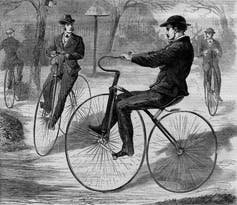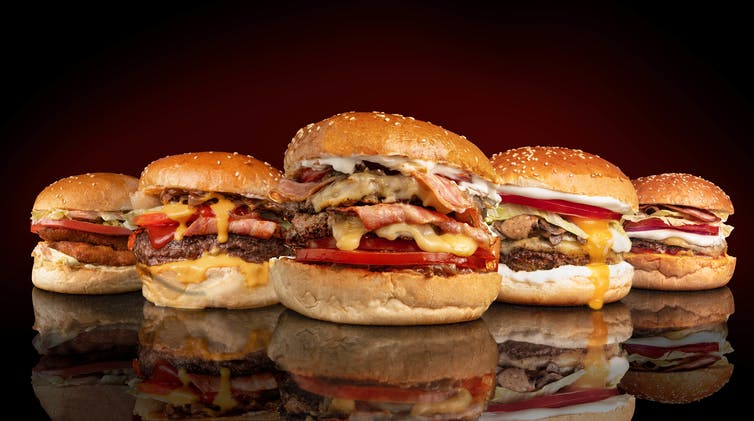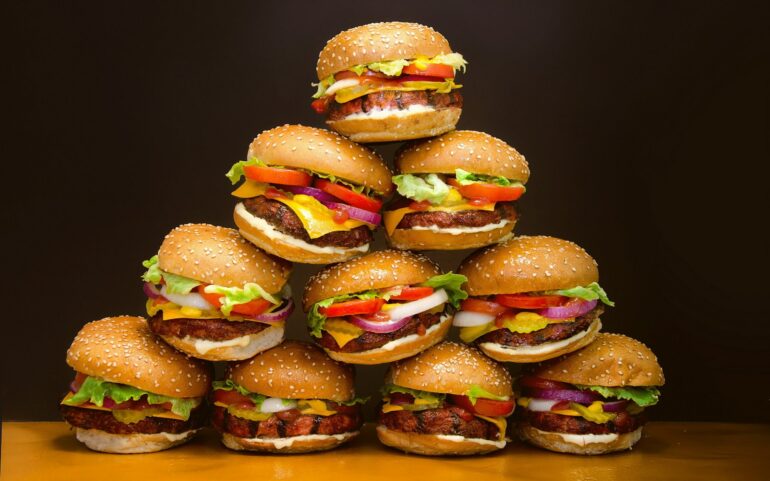The 2022 Tour de France is here. Starting in Copenhagen on July 1, the tour covers almost 2,100 miles (3,380 kilometers) over 24 days of riding through Denmark, Belgium, Switzerland and France. The tour is a feat of human athleticism, but to really understand how incredible it is to complete the race – much less win it – requires thinking about a unique blend of physics, biology and physiology. Mix those up just right and you get a Tour de France champion.
Over the years, The Conversation has published a series of stories covering the science of the Tour de France and elite athletics. Below are excerpts from three of those stories to help you better appreciate this spectacular race.

Bicycles have changed a lot since they were first invented in the early 1800s, but the principles of keeping the bike below the rider’s center of gravity remain the same.
Theodore R. Davis / Wikimedia Commons
1. The biomechanics of riding a bike
Riding a bike is an easy thing to do once you learn, but the physics of how bikes and riders work together is surprisingly complicated. As Stephen Cain, a mechanical engineer at West Virginia University, explains, “A big part of balancing a bicycle has to do with controlling the center of mass of the rider-bicycle system.” Basically, you have to keep the center of mass above the wheels – otherwise you tip over.
“Bicycle riders can use two main balancing strategies: steering and body movement relative to the bike,” says Cain. Steering keeps the bike underneath you while body movements subtly shift your center of gravity. Cain and his colleagues ran a study to understand the difference between how novice and professional cyclists balance a bike, and as he says in his article, they found that “both novice and expert riders exhibit similar balance performance at slow speeds. But at higher speeds, expert riders achieve superior balance performance by employing smaller but more effective body movements and less steering.”
This fine-scale control is why the racers in the Tour de France barely look like they are steering at all.
À lire aussi :
The mysterious biomechanics of riding – and balancing – a bicycle
2. How many calories do Tour riders burn?
Think back to the last time you did some hard exercise and how hungry you were that evening. Now imagine how hungry you would be if you needed to ride your bike over 100 miles (165 km) and climb nearly 10,000 feet (about 3,050 meters) of elevation in less than five hours. This is what racers will have to do during Stage 12 of this year’s race as they traverse mountain passes through the French Alps. As Eric Goff, a sports physicist at the University of Lynchburg explains, the cyclists are going to need a lot of fuel to pull this off.




